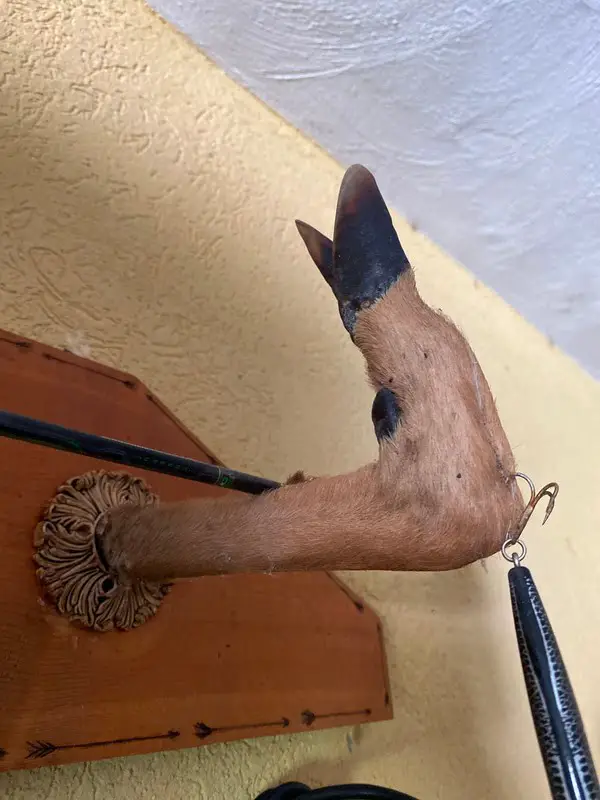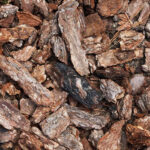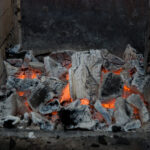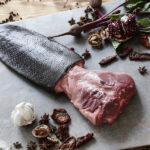With the zero-waste movement gaining popularity in the hunting world, using every part of the deer is resourceful and pays tribute to the life of the deer you’ve hunted.
For centuries, Native Americans have followed these values to consume all of the deer, using their hides and bones as clothes and tools. They have even created beautiful art and music with their hooves.
If you’ve hunted for or found deer legs, here are some tips on how to preserve deer hooves without a taxidermist.
Table of Contents
How to Preserve Deer Hooves
Deer hooves must be preserved by preparing the deer leg, removing all skin and tissue, and thoroughly drying the separated hoof. For at-home solutions, you can dry the leg in salt and borax, or by hanging it outside.
Prep Work
Whether you got deer legs from your hunt, from a friend, or from someone who processes deer carcasses, there are a few things you need to do before preserving deer hooves.
If you have the legs but are not ready to continue, you should try to prevent them from spoiling.
Prevent spoilage by putting them in freezer bags and keeping them in the freezer until ready to use.
With your fresh or frozen deer legs, you’ll want to remove all the fur, skin, and tissue around the bones. This can be done with a sharp knife.
A small, sharp paring knife will be necessary at this point and throughout the process. Just be extra careful and use proper knife etiquette when handling, as some steps of this process can be tricky.
Once the fur and skin have been peeled off, clean as much blood and dirt as you can. Afterward, you will be ready to start the boiling process.
Boiling the feet helps separate the hooves from the internal pedal bone. Leave the feet in boiling water for around 15 minutes.
At this point, you can try twisting and pulling the hoof from the bone with your hands. Or use pliers if it is too hot.
If they don’t come off, return them to the hot water for a while and try again. Eventually, they should pop off quite easily. Just be careful not to burn yourself!
Sometimes the pedal bone might come off with the hoof. If this happens, you’ll want to insert your knife between the bone and the hoof, slicing through the connections until you can pull the bone out with some pliers.
Continue using your knife, pliers and a heavy brush to clean away all pieces of skin, cartilage, bone or dirt left over until you have a clean hoof.
Preserving and Drying
Now that you’ve cleaned and separated the deer hooves, you’ll need to preserve them by drying them out.
This prevents bacteria from forming and removes any smell so that bugs and animals don’t believe you have a deer carcass on your property.
There are several natural or chemical ways you can achieve this without having to go to the taxidermist. These are cheap and effective options that can take varying amounts of time.
In the end, completing the drying/preservation process correctly is crucial because without it, your hooves (or other animal parts) could begin to smell or even rot!
Salt
Salt is your best option because it’s simple, cost-effective, and takes moderate time. Many at-home taxidermist hobbyists use salt to dry and preserve many small animal parts.
Submerging the hoof in iodized salt will fully dehydrate the hoof, curing it so that only the dry, hard, bacteria-free material of the hoof is left.
Cover the hoof completely in salt in a bowl and leave for around 6 to 8 weeks. WikiHow offers a great resource for you to learn more about at-home salt curing!
Borax
There is a chemical alternative to salt called borax. This sodium-based powder is primarily used as a strong cleaner and can be found in most laundry aisles at the grocery store.
Many professional and hobbyist taxidermists use borax as a drying and preserving agent.

Rather than salt, borax has the added benefit of more thoroughly absorbing oils and fluids from the specimen, which wards off insects and bacteria.
Borax is commonly used in more in-depth taxidermy projects, such as with small birds and mammals. For the purposes of deer hooves, it might be a bit overkill, as you probably will have already removed all the organic materials from the hoof.
This process has the same steps as the salt cure, by fully submerging the hoof in borax. It can take up to a year before it is fully cured, and you will need to intermittently swap out the borax for a fresh load.
Borax drying may be more useful if you are also trying to preserve deer antlers since they may have more organic material attached to them!
Hanging Outside
The simplest and cheapest option for drying is hanging the hooves outside. For this process, ensure the hooves are hanging where they will get many hours of direct sunlight while also ensuring they’re protected from rain.
This can take several months before they are ready.
If kept dry and away from animals, it will eventually get the job done and you will have thoroughly dried hooves.
Final Thoughts
Now that you’ve got your sanitized and preserved deer hooves, you can complete various useful or artistic projects. For instance, you can make a deer rattle that can be used as an instrument or in other projects, such as wind chimes.
Many hunters have also used deer hooves or preserved deer legs to make coat or gun racks. Using deer hooves for this will add some cool style to your hunting lodge or tree stand.
With some imagination and research, you can cheaply and easily preserve deer hooves on your own and use them to create a bunch of cool pieces and decorations!





